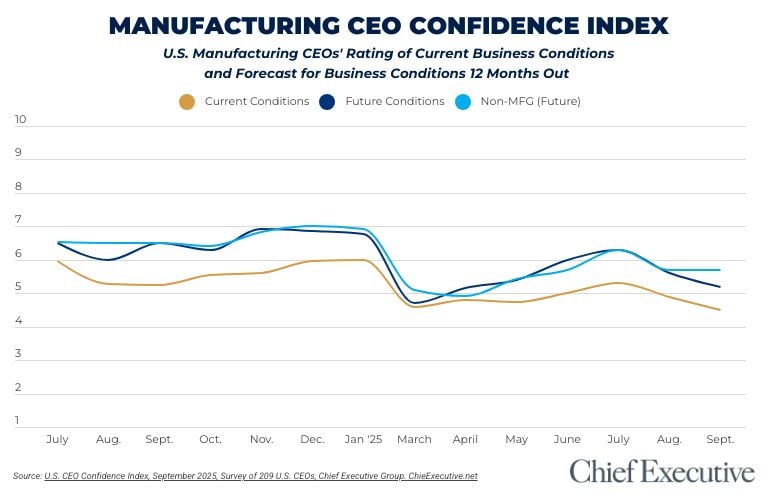

I’m being asked more frequently this year than last…‘when do you think the economy will cool down and do you have any suggestions as to how to prepare for that?’ Tempting, but, I don’t presume to answer the first question; folks far more qualified than I debate that every day.
I do try to answer the second one though, drawing on my 35+ years’ experience working with well over 100 enterprises ranging in revenues anywhere from $4 million to hundreds of millions and covering the full gamut of manufacturing, distribution and service. Here’s what I counsel.
• Know your ‘space.’ Does history show your industry or profession to be a leading or a lagging indicator and what trends are being reported through associations, industry data and broader economic studies? Retrace the trend lines pre the ‘Great Recession’ and factor in your experiences post 9/11 as well. Read the road signs, discuss with others who know your ‘space’ and then make your best informed judgment about what the next several years will bring.
• Still Optimistic? – Pass ‘Go’ and stay the course!
• Concerned – Begin to adjust your strategy so that post any downturn your rebound will be opportunistic.
◦ Modify your capital investment strategy to emphasize projects and programs that have a high short- term return. The payoff will come just when you need it…during the down cycle.
◦ Accommodate 10 to 15% of demand with ‘contractible’ resources, e.g. working overtime instead of hiring, putting on temporary or contract employees, outsourcing, and renting space in lieu of new brick and mortar. When the downturn comes you’ll be able to reverse scale by at least the same amount without impairing your core capabilities.
◦ If your business depends on inventory, be ready to reduce it as revenues slip with the goal of maintaining the same number of turns (or more) in a downturn as you maintain today. Working capital tied up in slow moving inventory is painful—it’s cash that could be used for another purpose and, it leads to obsolescence at the worst possible time.
◦ Shore up your lending arrangements, your line of credit, interest rates and length/term of loans. It’s always better to so from a position of strength (performance).
◦ Lock in and protect your customer/client base. My experience is that customers try hard to be loyal to their supply base in downturns but hungry competitors try just as hard to make those customers their own.
◦ Don’t be fooled by a positive cash flow. As a business contracts, accounts receivable from past higher revenue months’ flow in through the collection process, but are not replaced in kind by new revenues/billings. If it seems like you’re flush with cash – save it, there will be rainy days.
◦ Especially if you’ve been fair and timely in paying your supply base, negotiate extended terms before they are actually needed and then set the precedent of meeting those terms from the onset.
When a downturn reverses, it is not unusual that demand exceeds supply either in terms of capacity or ability to deliver goods or services on a timely basis. Why? Inevitably at least a few of those who didn’t plan as well as you either fell by the wayside or are now capital constrained, incapable of funding their growth. Be the opportunist; remember the past…plan for the future; lessons learned!
Read more: Turnaround, Transformation Or Stay The Course – Which One Are You?




Chief Executive Group exists to improve the performance of U.S. CEOs, senior executives and public-company directors, helping you grow your companies, build your communities and strengthen society. Learn more at chiefexecutivegroup.com.
0

1:00 - 5:00 pm
Over 70% of Executives Surveyed Agree: Many Strategic Planning Efforts Lack Systematic Approach Tips for Enhancing Your Strategic Planning Process
Executives expressed frustration with their current strategic planning process. Issues include:
Steve Rutan and Denise Harrison have put together an afternoon workshop that will provide the tools you need to address these concerns. They have worked with hundreds of executives to develop a systematic approach that will enable your team to make better decisions during strategic planning. Steve and Denise will walk you through exercises for prioritizing your lists and steps that will reset and reinvigorate your process. This will be a hands-on workshop that will enable you to think about your business as you use the tools that are being presented. If you are ready for a Strategic Planning tune-up, select this workshop in your registration form. The additional fee of $695 will be added to your total.

2:00 - 5:00 pm
Female leaders face the same issues all leaders do, but they often face additional challenges too. In this peer session, we will facilitate a discussion of best practices and how to overcome common barriers to help women leaders be more effective within and outside their organizations.
Limited space available.

10:30 - 5:00 pm
General’s Retreat at Hermitage Golf Course
Sponsored by UBS
General’s Retreat, built in 1986 with architect Gary Roger Baird, has been voted the “Best Golf Course in Nashville” and is a “must play” when visiting the Nashville, Tennessee area. With the beautiful setting along the Cumberland River, golfers of all capabilities will thoroughly enjoy the golf, scenery and hospitality.
The golf outing fee includes transportation to and from the hotel, greens/cart fees, use of practice facilities, and boxed lunch. The bus will leave the hotel at 10:30 am for a noon shotgun start and return to the hotel after the cocktail reception following the completion of the round.